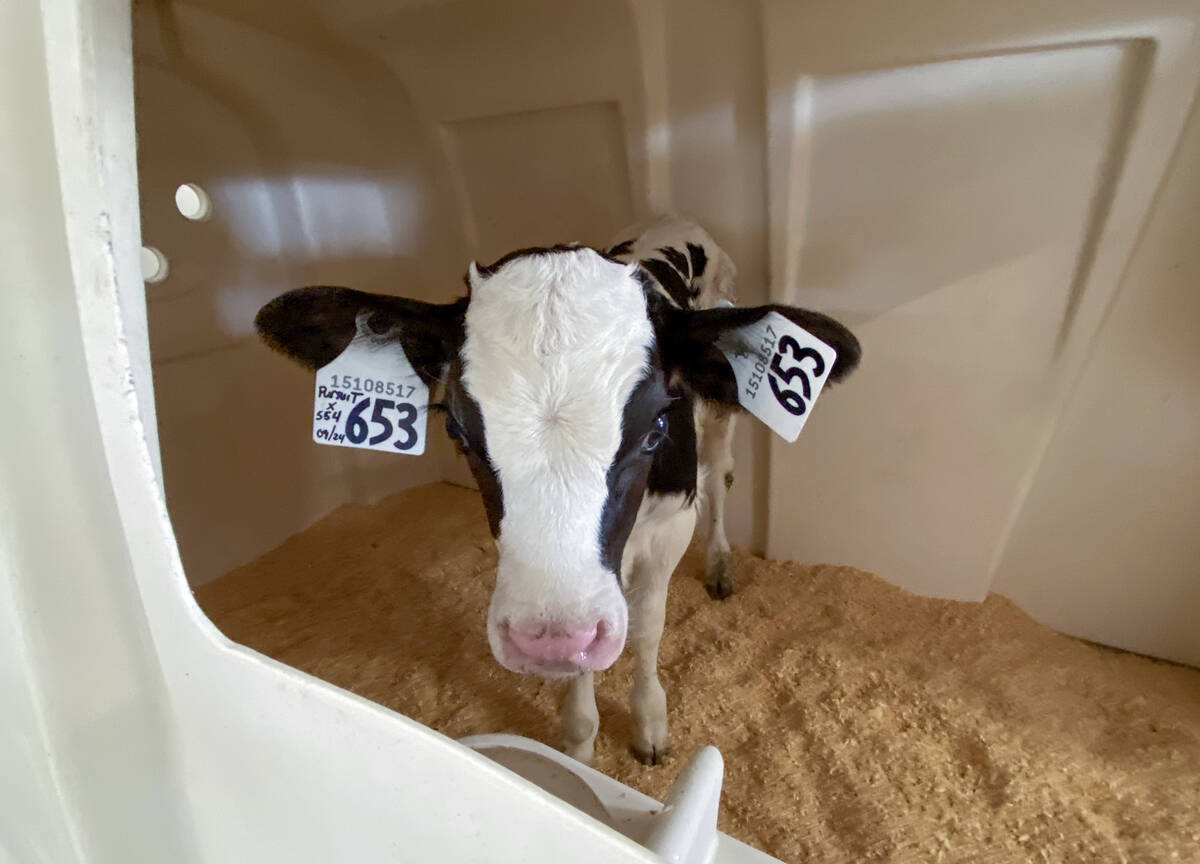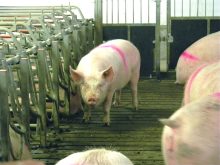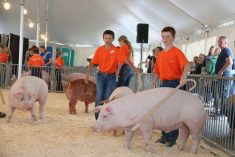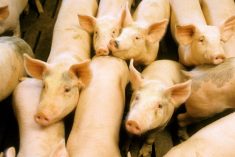With African Swine Fever a step away from the North American doorstep, the Canadian Pork Council (CPC) launched a proactive initiative.
Rene Roy, CPC’s first vice-chair, shared the four pillars of action within the year-old African Swine Fever Executive Management Board (ASF EMB) and the goals it hopes to achieve by 2023 at Ontario Pork’s (OP) annual meeting March 23.
Why it matters: African Swine Fever can devastate swine herds, and closes borders to trade and would have serious impact on Canada’s hog farmers.
Read Also

Lactanet turns methane expertise into business opportunity
Lactanet’s new fee-for-service breeding tool initiative to reduce greenhouse gas emissions in Canadian and Swiss Holstein herds will launch in April 2026.
Roy said the CPC launched the ASF board to address the various challenges of creating preparedness and response if the disease hits North America or Canada. The four pillars of action are: enhanced biosecurity-prevention; preparedness planning, ensuring business continuity, and coordinated risk communication.
“We have to make sure we have good biosecurity, not only on the farm but also at the national level and the border,” said Roy.
Because they play a crucial role in addressing national ASF cases, the Canadian Food Inspection Agency’s (CFIA) National Emergency Operations Centre Management Team (NEOCMT) is involved in most ASF board’s four pillars of action, based on the Pan-Canadian Action Plan for ASF.

“They aren’t able to do everything alone, so the industry has to come to support,” he said. “At the end of the day, it’s not a choice to be able to plan and coordinate our effort; it’s a cross-cutting issue that requires a lot of collaboration and discussion.”
The ASF board has made headway on enhanced border control with detector dogs introduced several years ago. However, while the pandemic reduced flight traffic, it didn’t reduce the risk to zero for introducing meat from other infected countries into Canada.
“We still have this threat to take care of,” he said. “The Dominican Republic has been infected, so it adds the number of angles we have to cover at the border. We have also updated our biosecurity tools, and there is now a wild pig draft strategy that is ready.”
While Roy was reluctant to address the thought process of someone willing to smuggle meat across the border, he did question their failure to acknowledge the severe fine if caught.
“As producers, that’s something we can echo to . . . the media to inform the public,” he said. “Don’t bring any meat from outside the country; you’ll receive a fine. Why take the risk? We have plenty of good food here that’s high quality.”
The CanSpotASF surveillance tool was established this year as part of the preparedness pillar, where veterinarians will put an animal through special screening if there is a suspicious case to increase early detection if a case appears in Canada.
Roy said enhancing the surveillance program to include abattoirs will be rolled out in the coming months.
“The next step will be to use the standard and benchmark tool to improve animal health and welfare,” he said, adding it needs to happen at the farm and supplier level. “And implement the wild pig strategy (and) make sure there are actions linked to it.”
Roy said eradicating wild boars and pigs, to a great extent, from Canada will give us a fighting chance against ASF, and the Ontario government is putting in the work to make that happen.
There are discussions around depopulation and disposal planning at the federal and provincial levels and how to control movement if ASF arrives. The CPC has already funded some projects for disposal tools.
Clare Schlegel, OP representative for Swine Health Ontario, former OP chair and CPC past-president, asked Roy what discussions were had around a potential border closure event.
“The most important question we (need to) address first, because we’re a producer organization, is how would a border closure event affect my farm?” said Schlegel. “What challenges would I have to face the next day?”
Throughout his two decades of dealing with potential border closures, Schlegel said the one hurdle left unresolved is who will decide to kill pigs within the first week or two of closure, and who will do it.
“I’m talking slaughter for food for processing, not euthanizing,” said Schlegel. “For what price will they change hands? And how are we going to market the 95 per cent of the herd that isn’t affected?”
He hopes the working group is putting thought into it now but said the solution might require regulation with some agreement because there are two scenarios he sees happening: One where each Ontario processor decides how many hogs they kill and from which producers, or the equally shared herd approach.
“Hopefully, it’s an event we never face as a country,” he said towards Roy. “That’s really important work you’re doing.”
John de Bruyn, OP chair, encouraged producers to consider the implications of that eventuality on their operation and have emergency planning in place.
“(We’re) working with the provincial government and nationally on all the questions you’ve just asked,” de Bruyn said. “I wouldn’t say there are clear answers on all of them, but I can tell you there’s a lot of planning going on in different areas, including euthanization and disposal.”
Roy said a working group including the provincial and federal governments, the CFIA, National Farmed Animal Health and Welfare Council and processors are looking at the issues around Schlegel’s supply question.
They’re attempting to establish protocols on how to handle such a massive kill while sharing the challenge and the damaging blow to the industry if it were to happen.
“We must find a way we have an equal share if it happens. Of course, some parts are easy to agree to before it happens.,” he said. “When you are in a crisis, you must have some type of working framework you are able to apply so that it works and it’s not just a wish.”















